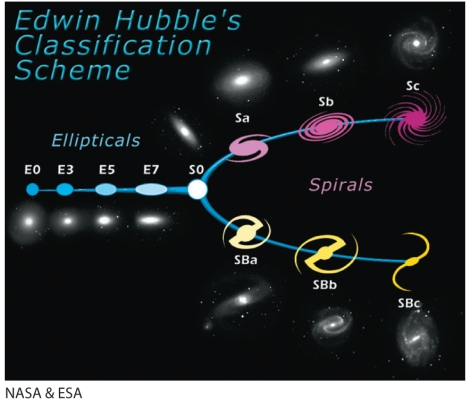Multiple Choice
How do galaxies evolve on the Hubble tuning-fork classification scheme and what is the evolutionary significance of this diagram, shown in Figure 17-15 of the text? 
A) About three-quarters of galaxies do not evolve, but others can change their position. Usually, spiral galaxies merge to form ellipticals.
B) The "young" irregular and lenticular galaxies in the center of the tuning fork evolve to either elliptical galaxies if the material is metal-poor or spiral galaxies if the material is metal-rich.
C) Stars slowly die and the spiral arms slowly spin up and tighten to transform spiral galaxies into elliptical galaxies.
D) Elliptical galaxies slowly condense and spin up to form spiral galaxies, the increasing stellar collisions forming the interstellar material in the spiral arms.
Correct Answer:

Verified
Correct Answer:
Verified
Q78: Which two quantities are shown to be
Q79: In spiral galaxies, the tightness of the
Q80: The temperature of the hot intergalactic gas
Q81: Why is it surprising to find spiral
Q82: What is a lenticular (or S0) galaxy?<br>A)
Q84: Which of these is NOT a possible
Q85: The Local Group is<br>A) the name of
Q86: A close encounter between two galaxies is
Q87: Who developed the classification system that divides
Q88: What is an ultra-diffuse galaxy?<br>A) a giant